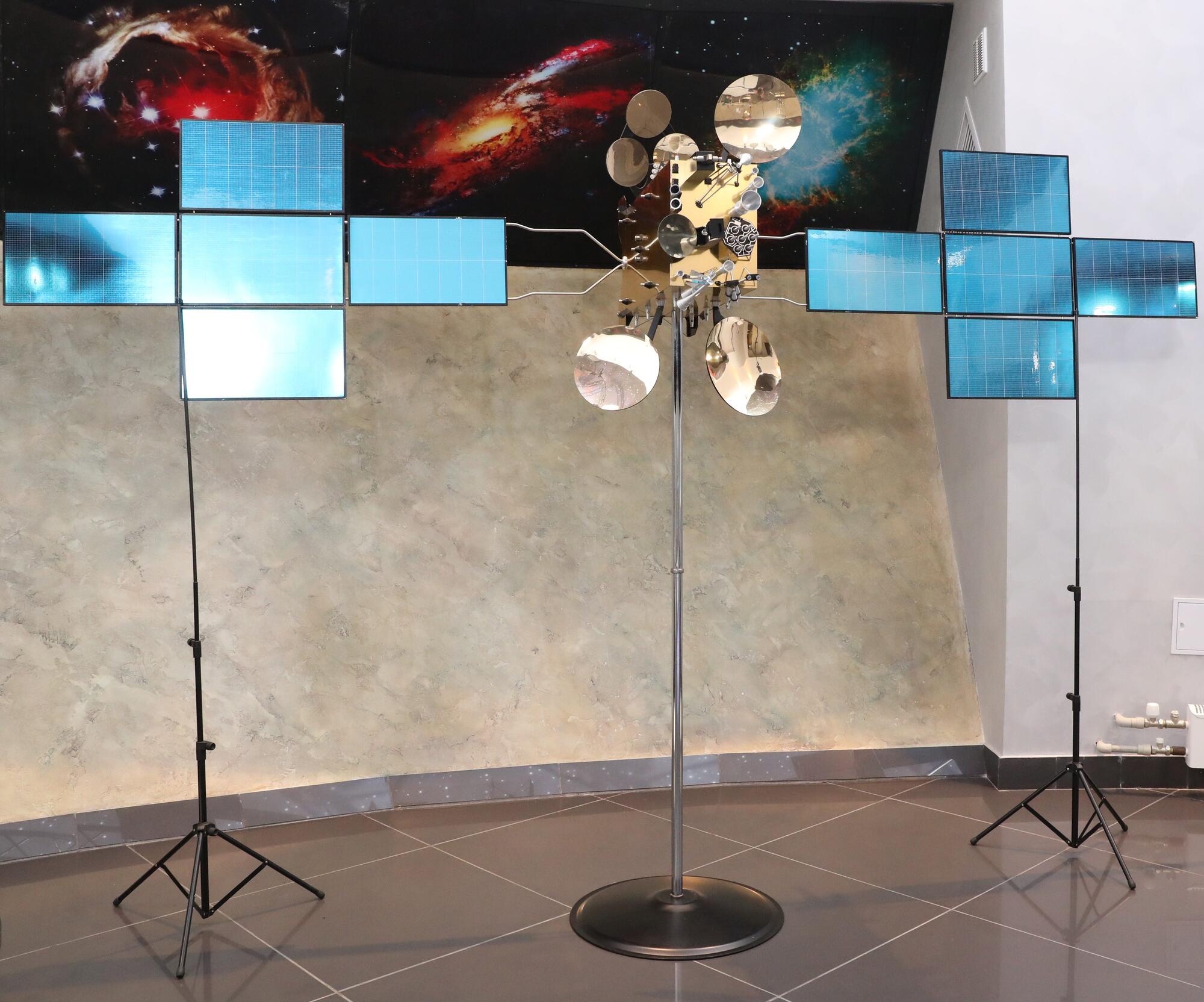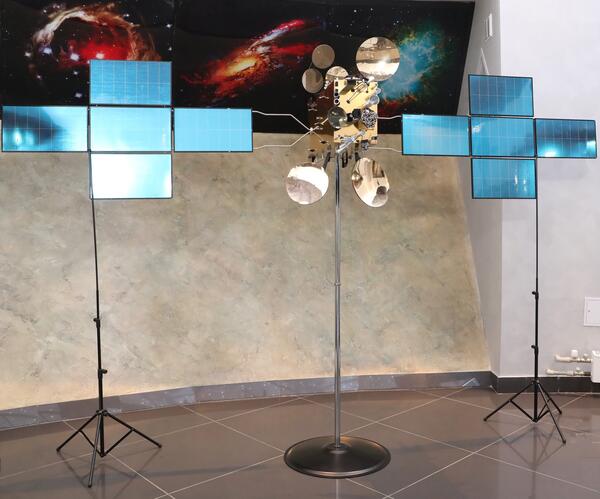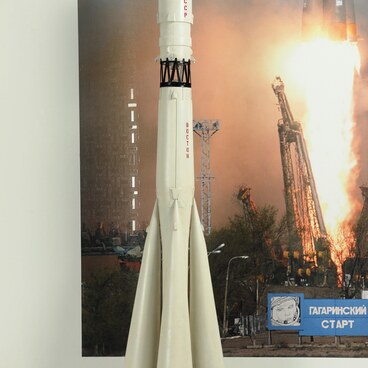Express AM-5 is a Russian telecommunications satellite designed to broadcast digital television, radio and state and government communications signals, and also to perform a range of multi-service functions, and to create a VSAT-based communications network.
The satellite was developed jointly by Information Satellite Systems named after M.F. Reshetnev, the Radio Research Institute FSUE, and Canadian MDA Corporation. The satellite was developed for and is operated by Space Communications FSUE.
The USSR’s first satellites were developed in the 1960s by OKB-10 (which later became the Applied Mechanics Design Bureau, and is now ISS JSC) under the direction of M.F. Reshetnev. In the 1960s, a number of satellites were launched and began operating in low-earth orbit: first Strela-1, then Molniya, Raduga, Ekran and Gorizont. In 1994, the first satellite in the Express series was launched.
As of the end of 2019, 11 satellites in the series are orbiting the Earth. The largest and most powerful of these is the Express-AM5, which was launched by a Proton-M launch vehicle combined with a Briz-M upper stage rocket, from Baikonur cosmodrome on December 26, 2013. Since the satellite was heavier than the rocket’s maximum capacity for launching equipment into high earth orbit, the technique of orbit raising, in which the satellite is pushed up to the required orbit using its own electric thrusters, was applied for the first time in the history of the satellite sector.
The Express-AM5 satellite is based on the heavy Express-2000 platform. It weighs 3,400 kg, and has a maximum payload of 1,030 kg. It is equipped with 10 antenna and 84 transponders (devices which receive and transmit signals automatically) and can broadcast on the C, Ku, Ka and L wavebands. The satellite operates on geostationary orbits at a height of 36,000 km above the Earth’s surface.At that height the satellite’s angular speed is the same as that of the Earth’s rotation, and as a result the satellite remains “fixed” above a specific point on the planet’s surface. This position is the most suitable for communications satellites. The Express-AM5 operating point is 140 degrees of east longitude, which enables it to provide telecommunications services to the Russian Far East and Transbaikal region. The Express-AM5 has a service life of 15 years.
This model of the Express AM-5 satellite, together with models of other satellites, was transferred to the museum by the manufacturer in 2017 to mark the opening of the Children’s Space Center in Kirov.
The satellite was developed jointly by Information Satellite Systems named after M.F. Reshetnev, the Radio Research Institute FSUE, and Canadian MDA Corporation. The satellite was developed for and is operated by Space Communications FSUE.
The USSR’s first satellites were developed in the 1960s by OKB-10 (which later became the Applied Mechanics Design Bureau, and is now ISS JSC) under the direction of M.F. Reshetnev. In the 1960s, a number of satellites were launched and began operating in low-earth orbit: first Strela-1, then Molniya, Raduga, Ekran and Gorizont. In 1994, the first satellite in the Express series was launched.
As of the end of 2019, 11 satellites in the series are orbiting the Earth. The largest and most powerful of these is the Express-AM5, which was launched by a Proton-M launch vehicle combined with a Briz-M upper stage rocket, from Baikonur cosmodrome on December 26, 2013. Since the satellite was heavier than the rocket’s maximum capacity for launching equipment into high earth orbit, the technique of orbit raising, in which the satellite is pushed up to the required orbit using its own electric thrusters, was applied for the first time in the history of the satellite sector.
The Express-AM5 satellite is based on the heavy Express-2000 platform. It weighs 3,400 kg, and has a maximum payload of 1,030 kg. It is equipped with 10 antenna and 84 transponders (devices which receive and transmit signals automatically) and can broadcast on the C, Ku, Ka and L wavebands. The satellite operates on geostationary orbits at a height of 36,000 km above the Earth’s surface.At that height the satellite’s angular speed is the same as that of the Earth’s rotation, and as a result the satellite remains “fixed” above a specific point on the planet’s surface. This position is the most suitable for communications satellites. The Express-AM5 operating point is 140 degrees of east longitude, which enables it to provide telecommunications services to the Russian Far East and Transbaikal region. The Express-AM5 has a service life of 15 years.
This model of the Express AM-5 satellite, together with models of other satellites, was transferred to the museum by the manufacturer in 2017 to mark the opening of the Children’s Space Center in Kirov.



